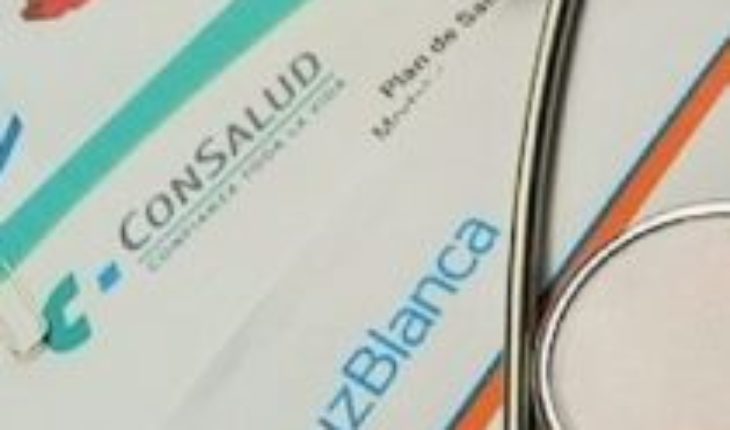On the proposal to install the Right to Health in the future Constitution, there is an issue that is extremely clear from the approaches that are expressed regarding the creation of a National Health System: the Isapres close their doors.
This puts an end to the original sin that meant the segmentation of the social security system of health 40 years ago, according to which two pension worlds were established from the state determination that citizens with known income would have to allocate a portion of that – 7% – to achieve protection against disease events, some in the public sector, in Fonasa, and others in the private sector, in the Isapres, an issue that the Constitution of the time sought to endorse with the idea that people could choose the system to which to ascribe.
The first, those assigned to the public sector, requesting state subsidy, and the second, those assigned to the private sector, free of such requirement thanks to their income. Since the private component of this social protection installed premium rates according to the risks, the system also segmented according to those, producing a greater relative participation of people at greater risk of getting sick within the public component of the conspicuous system. As can be seen, people’s supposed freedom of choice was constrained by income and the risks of getting sick from it.
Thus, the Isapres lived their healthiest and free years of question until the mid-90s. Indeed, at the beginning of 1996, on Wednesday, 3 January, El Mercurio editorialized expressing its concern about the proposals made by the Minister of Health of the time, the economist Carlos Massad, who had pointed out that the time to reform the social security system of health – that is, to the Isapres – had already arrived. And indeed, the Ministry of Health had launched a work machine aimed at producing this transformation, through the realization of numerous studies – among others, the first study of Burden of Disease – and meetings with stakeholders of the matter, among them, the Association of Isapres of the time, with whom meetings were held in the disappeared Restaurant Carroussel, in Los Conquistadores, steps from Pedro de Valdivia Norte. That is, progress was being made, until the minister was summoned to lead the Central Bank.
It is necessary to record here that the technicians of the Ministry of Health who presented their resignations with the departure of Minister Massad, continued to work with the Association of Isapres in the idea of reforming the system, with the sensible participation of René Merino and Favio Valdés, of the Association. Then came the reform of President Lagos and new technical equipment, where it was not possible to touch 7% of the Isapre as had been proposed at the outset, between 3 and 4% of that for Fonasa. After the materialization of the GES with an increase in VAT in the absence of contributions, came commissions in the governments of Piñera, the first, and Bachelet, the second, where the idea of reforms of the Isapre system was returned, with the proposal of “single or flat rates” and “risk compensation fund”. However, we will all remember, the Isapres never felt enthusiastic about stopping doing the business they were used to and never really felt the “breath of the tiger” until today. In the Piñera commission they were part of the minority proposal, which resisted the changes, and in Bachelet’s we saw those who participated in the commission on behalf of the Isapres resign with great fanfare. Such is that the possibility of changing its nature, to join a renewed social security system, was never taken into consideration by the industry.
And here we are, about to launch a process through which the Isapres will go to give to the market of complementary insurance, while the robust amounts that were destined to the payment of the premiums coming from 7% of the known incomes of the people will be destined to the Fonasa, beneficiaries included. This was noted in more than one opinion column written on the subject. The sentence was something like: patience has been filled. Frankly, I am one of those who believed for a long time that the possibility of a single insurance with flat rates and risk compensation fund to which the “ex Isapre” attended was feasible. There was, according to me, an opportunity for transformation for the industry qThis would have allowed Chile to make a real leap in modern and promising social security that would have allowed the consolidation of the mixed health system under a public perspective. By the way, I now see that maybe it was feasible technically, but not politically. The Isapres always preferred to remain what they were. All or nothing. Well, nothing.
What is coming, however, is not trivial. Not only because of the intrinsic resistances that will have to acquire varied forms, some more evident and direct than others, but because the project, in the perspective of the “social evaluation of projects”, has benefits that are perhaps very evident for those in whose name it is promoted, but also has a series of effects or externalities on certain population groups, as are the well-to-do middle class – which is the public of the Isapres – and the medical professionals, whose income has been detached from the voluminous business that the private component of social security – that is, the Isapres – represents.
This allows us to presume that we are facing a reform whose good success means that it must be conducted in a cautious and prudent manner, step by step, controlling well the diversity of its impacts, to avoid failures and reduce implementation costs. For now, we understand that the Government will have a period of two years to present a design, in the form of a bill, that can be discussed in Parliament.
Follow us on
The content expressed in this opinion column is the sole responsibility of its author, and does not necessarily reflect the editorial line or position of El Mostrador.





